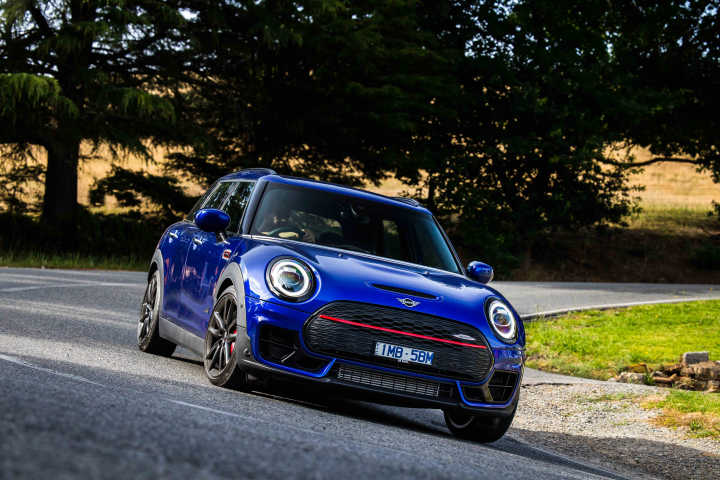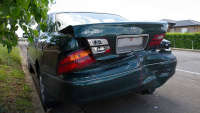Defining what constitutes a ‘sports car’ is a reliably easy way of starting an argument. Some, slightly simplistic folk will insist that it means anything with wheels that’s painted red. Others that having a roof that’s convertible makes the grade. But the simplest definition is that it’s any car that values performance and the thrill of driving over whether or not you have ample space to fit your golf clubs and/or your 2.5 kids.
There are plenty of people who’ll argue over that as well, of course.
A car’s handling, how fast it can get from zero to 100km/h and what top speed you can hit are the likely concerns of the sports car driver, while being sleek and powerful, rather than sensible and practical, are defining traits. Fuel economy, for example, concerns not the sporty driving enthusiast.
Other common characteristics of the sports car are having just two seats and two doors (although it can still have two smaller seats in the back), offering all-wheel-drive (AWD), and the body of the vehicle, and thus the driver’s buttocks, being closer to the ground to improve handling. A low centre of gravity is the key to driver involvement.
Once again, of course, there is a very solid argument to be made that many great sports cars have rear-wheel drive, and that some have front-wheel drive, or that Volkswagen’s Golf GTI, and BMW’s M3, manage to be definitive sports cars despite having four doors and five seats.
Sports cars, essentially, defy exact definition because they are as much subjective, at least in some ways, as they are objective. Unless you’re an actuary or other insurance company employee, of course.
Insurance companies often consider sports cars to be more dangerous and classify them based on the power of the vehicle’s engine, and the chances are that if you’re behind the wheel of something that has above-average grunt - think V6, V8, or anything that’s turbocharged - then you’re driving what can likely be classified, in insurance terms at least, as a sports car (or ‘performance car’).
Sports cars have their origins in the touring cars and roadsters (traditionally cars without a fixed roof) of the early 20th century. The 1903 Mercedes Simplex 60 hp, designed by Wilhelm Maybach and Paul Daimler, was labelled a ‘sports car’, even though it has as much in common with modern sports cars as two cans connected by string have in common with today’s mobile phones.
Read on for a list of the cheapest sports cars in Australia that are currently for sale - and offer the best value - to help you decide upon the sports car of your dreams.
The best value cheap sports cars in Australia below are mostly under 50k - if you’re looking for something under 30k, under 20k or even under 10k, you’re probably best to start sniffing around the used-car market.
Cheap sports cars in Australia
Toyota 86 / Subaru BRZ (MY22)

Price: From $32,180 (Toyota 86) and $35,270 (Subaru BRZ), plus on-road costs
The reason you’re seeing two cars in the same entry is simple: they’re essentially the same car, and the two-door, rear-wheel-drive coupes are almost identical - Subaru supplies the chassis and engine, while Toyota brings the fuel-injection system and design.
For the sports car enthusiast looking for the best budget sports car on the market, you can’t go wrong with either of these lithe, lightweight and punchy models, where you’re essentially getting the reliability and hardiness of Toyota in a far sexier body than what the bland brand is traditionally known for. Either version is a joy to drive, without being dangerously fast.
Mazda MX-5 (MY22)

Price: From $36,090, plus on-road costs
After a sports car that’s good-looking, powerful (enough) and allows you to experience the thrill of having the wind blow through your hair while clocking kilometres? Mazda’s iconic MX-5 might be for you, as it represents one the best cheap sports cars around (those who aren’t fond of wind can opt for the RF hard-top variant at an added cost).
Those who pony up for a Mazda MX-5 can also choose between a 1.5-litre or 2.0-litre four-cylinder engine and a manual or automatic transmission, with the manual the obviously choice for the enthusiast driver. Once again, the Mazda can feel fast without actually shredding your licence and is a hoot to drive.
Subaru WRX (MY22)
_0.jpg)
Price: $40,990, plus on-road costs
Considering the 1990s are suddenly cool again, which is the era when the Subaru WRX launched, don’t be surprised if there’s a newfound interest in this fast and furious sports car.
The entry-level sedan with basic trim still packs a 2.0-litre turbocharged engine, and there are options for a standard six-speed manual or a continuously variable transmission. Those wanting to go higher spec may be interested in the STi version, which thunders along thanks to a turbocharged 2.5-litre, four-cylinder boxer engine. Possibly the best sportiness-per-dollar equation in the world of motoring, the WRX is a legend for good reason.
Nissan 370Z (MY22)

Price: From $50,490, plus on-road costs
This two-seat, rear-wheel-drive sports coupe from Nissan is a step up in price compared to the previously mentioned models, but for the extra bucks you’ll be getting a beefy six cylinder, 3.7-litre engine housed inside an iconic design.
At less than 1500kg, it’s relatively light, meaning the engine’s 245kW and 363Nm torque will rocket the 370Z along at a decent clip, if that’s your thing (you’re reading an article about sports cars, so we’ll assume it is).
Mini Cooper Clubman JCW Sport (MY21)

Price: From $57,900, plus on-road costs
Hot-hatch fans will be instantly drawn to this iteration of the Mini, which is the most powerful variant on the market, a low-riding but powerful beast that will have you gripped to the road like a slot car on steroids.
It’s compact, but that doesn’t mean it doesn’t pack bite: a twin-charge, 2.0-litre, four-cylinder engine that sends out a sizeable 225kW and 450Nm of torque will fulfil your need for speed, and a twin-pipe sports exhaust means you’ll likely be heard well before you’re seen. Genuinely go-kart like handling completes a very tempting package.



.jpg)
.jpg)
.jpg)


.jpg)

.jpg)
 copy.jpg)
.jpg)


.jpg)
.jpg)
.jpg)
.jpg)
.jpg)
.jpg)


.jpg)

.jpg)



.jpg)

.jpg)
Comments